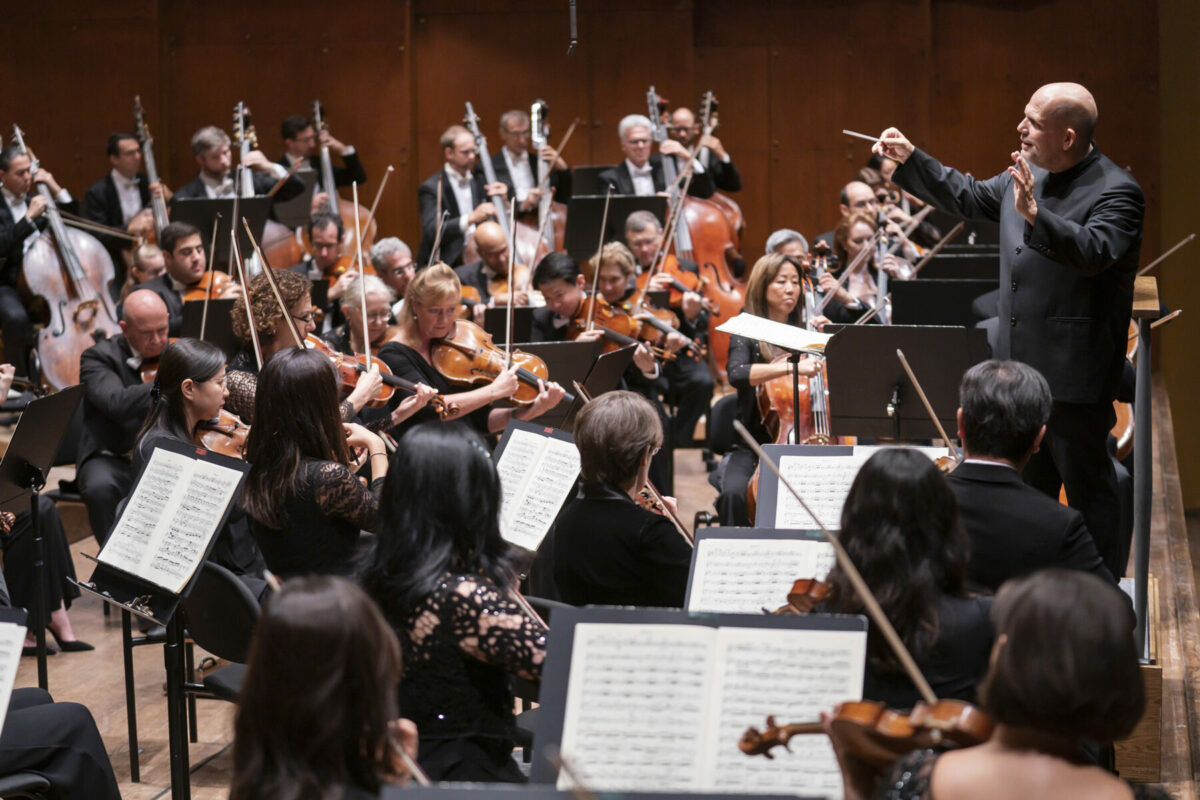
For the first time in its 180-year history, the orchestra sees women outnumber their male counterparts, with 45 women to 44 men
Founded in 1842, the New York Philharmonic is the oldest symphony orchestra in the U.S.
In a recent piece by The New York Times, it has been reported that when the orchestra moved to Lincoln Center in 1962, its new hall had no women’s dressing rooms, as there were no women in the orchestra.
Now, women comprise a little over 50% of NY Phil, but dominate some orchestral sections more than others, for instance, 27 of the ensemble’s 30 violinists are women (in contrast, the percussion section is all-male). Additionally, of NY Phil’s recently held auditions, 10 of the 12 latest musician hires have been women.
“This certainly shows tremendous strides,” said NY Phil’s CEO and president, Deborah Borda. “Women are winning these positions fair and square…All we seek is equity, because society is 50-50.”
Despite possibilities that the balance between women and men might sway due to NY Phil having 16 player vacancies to fill — from delays in auditioning caused by the COVID-19 pandemic — the change is still impactful, considering NY Phil only had five women in the early 1970s. It was during that decade that blind auditions were implemented, creating a fairer selection process and preventing gender bias.
The Philharmonic hired its first female member in 1922 — Stephanie Goldner, a 26-year-old harpist from Vienna. However, the orchestra became all-male again for decades after Goldner left in 1932.
In 1966, double bassist Orin O’Brien became NY Phil’s first female section player. As The NY Times explained, O’Brien was really the first woman to become a permanent member of the orchestra and was considered the beacon of a pioneering group of female artists who created opportunities for other women to join. By 1992, NY Phil included 29 female musicians.
“It’s a sea change,” said NY Phil principal violist Cynthia Phelps, who joined the orchestra in 1992. “This has been a hard-won, long battle, and it continues to be.”
From left to right: NY Phil principal associate concertmaster Sheryl Staples, principal second violinist Qianqian Li, and associate principal second violinist Lisa Eunsoo Kim (Photo credit: Calla Kessler/NY Times)
Even though representation gradually increased, female musicians often faced discrimination and sexism in the industry. In 2019, the Boston Symphony settled a lawsuit with its principal flutist Elizabeth Rowe, who was being paid $70,000 per year less than the orchestra’s male principal oboist, John Ferrillo, despite their same workload.
For Judith LeClair, who joined NY Phil as principal bassoon in 1981 at age 23, it took 20 years before pay parity was reached. “I did feel I was taken advantage of in the very beginning because I was a woman, and young and naïve,” she told NY Times. “It felt humiliating and demeaning.”
The NY Phil has women in about a third of its leadership positions, including its principal positions, plus assistant or associate principal roles, which are the best-paid for orchestral musicians. The orchestra, like many around the world, has never had a female music director and has a noticeable absence of Black and Latino members.
Additionally, women make up around half of the players in orchestras across the U.S. but are still highly outnumbered by men in most ensembles, including those in Boston, Philadelphia, and Los Angeles.
Internationally, women are still the “firsts” in various positions in the classical music industry, including Ukrainian conductor Oksana Lyniv who became the first female music director of an Italian opera house, and Mélisse Brunet who became the Lexington Philharmonic Orchestra’s first female music director in its 61-year history.
For the Vienna Philharmonic — which is now around 17 percent female — they did not allow women to audition until 1997.
In the last few years, as more women have become leaders in the orchestra, it has become a more inclusive environment. This is also helped through dress code considerations. NY Phil updated their dress code in 2018 to allow women to wear pants on stage, while the Philadelphia Orchestra followed in 2021.
In promoting change, NY Phil has aimed to hire more women as guest conductors and commission female composers’ works. Additionally, some of its players have urged the organization to select a woman for the music director role, currently held by Jaap van Zweden, who will step down in 2024.
“It’s more of a family now,” said Sherry Sylar, associate principal oboe, who joined NY Phil in 1984. “I’m not saying I want this to be an all-women orchestra either…It’s just nice to see that women are being recognized for their talent.”
Gender parity is not the only milestone of the orchestra — this fall, NY Phil Philharmonic also performs in its newly renovated David Geffen Hall for their upcoming season.